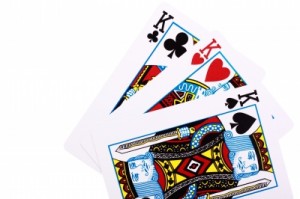
Boswellia serrata, also known as Indian frankincense, Salai guggal or olibanum indicum is the resin from various Boswellia trees but ‘serrata’ in particular. It is also known in Sanskrit as shallaki . It is popularly administered to treat arthritis, osteoarthritis (OA) in particular, especially in Ayurvedic medicine. The plant product has been extensively reviewed (Abdel-Tawab et al., 2011) and is native to India, especially the Punjab which covers a good part of Pakistan.

Generally, extracts have been researched for osteoarthritis, joint inflammation, rheumatoid arthritis, colitis and Crohn’s disease.
A recent randomized, open-label comparative study, compared Boswellia extract with the drug valdecoxib, which is a selective COX-2 inhibitor, in knee OA. (Sontakke et al., 2007). Boswellia was given to a group – total amount 333 mg, three times daily. They reported reduced pain, stiffness and difficulty performing daily activities within two months of therapy and these effects and improvements even continued one month after stopping supplementation. The group receiving valdecoxib though had similar benefits but ended immediately on ending the intervention.
The active components are boswellic acid and other pentacyclic triterpene acids.
Early research with animals demonstrated that ingestion of a defatted alcoholic extract of Boswellia reduced antibody synthesis, diminished polymorphonuclear leukocyte infiltration and migration, and inhibited the classical complement pathway (Sharma et al., 1988).
Standardised Boswellia extracts available as 5-Loxin®, from PLT Health Solutions (Morristown, N.J. USA) have been clinically demonstrated to improve joint comfort and protect against cartilage degradation. The commercial extract inhibits the well known enzyme involved in inflammation, 5-lipoxygenase. It also inhibited the expression of the matrix metalloproteinase-3 (MMP-3) which is TNF-alpha-induced, and is also linked to rheumatoid arthritis based tissue damage. A slightly later study showed a reduction in the activities of the tumour necrosis factor-alpha (TNF-alpha) and interleukin (IL), whilst inhibiting the 5-lipoxygenase (5-LOX) enzyme and associated inflammatory pathway (Ammon, 2006). At the SupplySide West exhibition in 2016, PLT Health Solutions demonstrated their product Aqualox Joint health Support. This is a low-dosage, water-soluble variant of their 5-Loxin®. AquaLOX is a newly developed extract which has a similar pharmacokinetic profile to 5-Loxin.
References
Abdel-Tawah, M., Werz, O., Schubert-Zsilavecz, M. (2011) Boswellia serrata: An Overall assessment of In Vitro, preclinical, Pharmacokinetic and Clinical Data. Clin. Pharmacokinetics 50(6) pp. 349-369
Ammon, H.P. (2006) Boswellic acids in chronic inflammatory diseases. Planta Med. Oct. 72(12) pp. 1100-16.
Sontakke, S., Thawani, V., Pimpalkhute, S., Babhulkar, S., Hingorami, I. (2007) Open, randomized, controlled clinical trial of Boswellia serrata extract as compared to valdecoxib in osteoarthritis of knee. Indian J. Pharmacol. 39 pp. 27-9.
Roy, S. et al. (2005) Human Genome Screen to Identify the Genetic Basis of the Anti-inflammatory Effects of Boswellia in Microvascular Endothelial Cells. DNA Cell Biol. 24(4) pp. 244-255
Sharma, M.L., Khajuria, A., Kaul, A., et al. (1988) Effects of salai guggal ex-Boswellia serrata on cellular and humoral immune responses and leukocyte migration. Agents Actions 24 pp. 161-164.

Leave a Reply